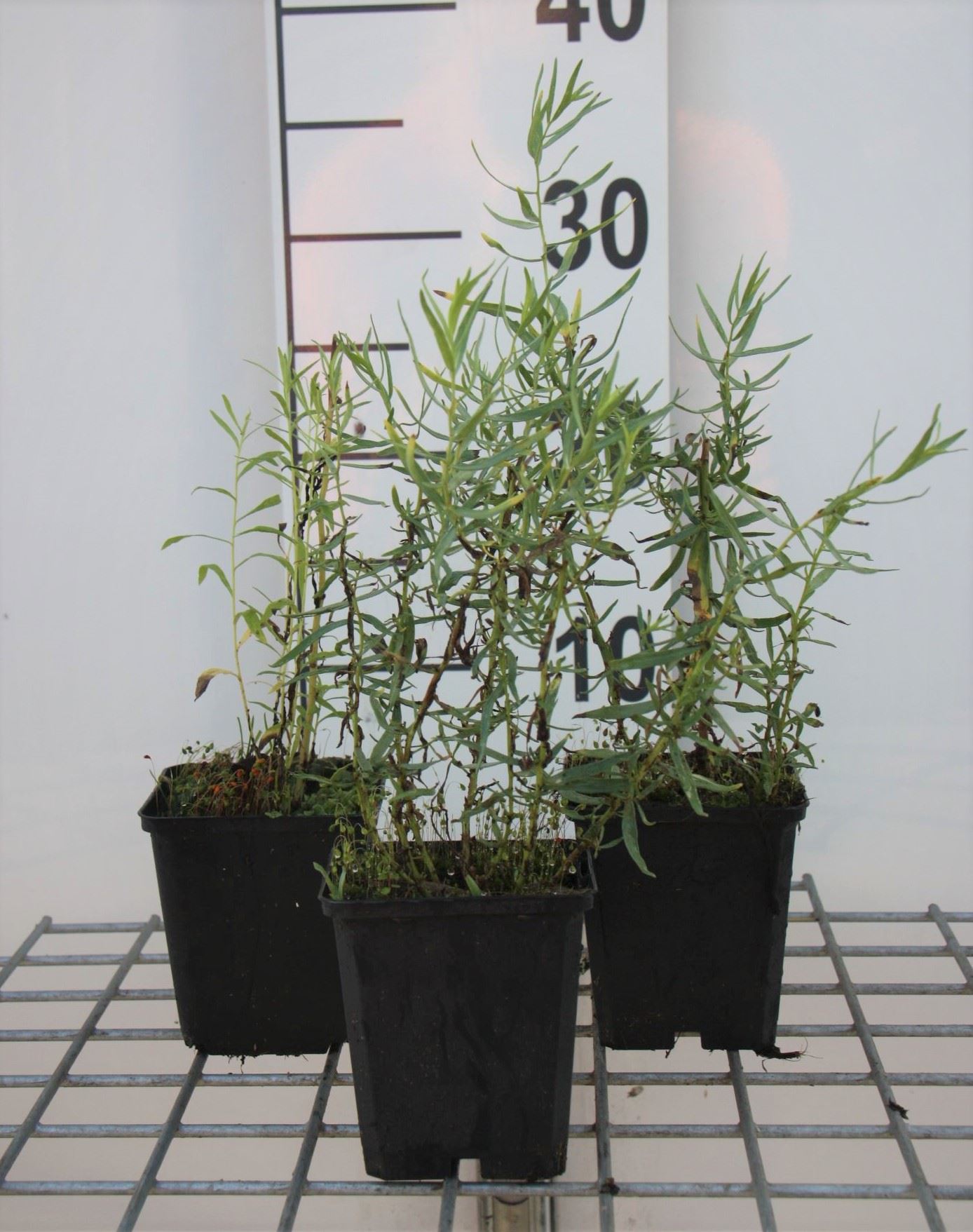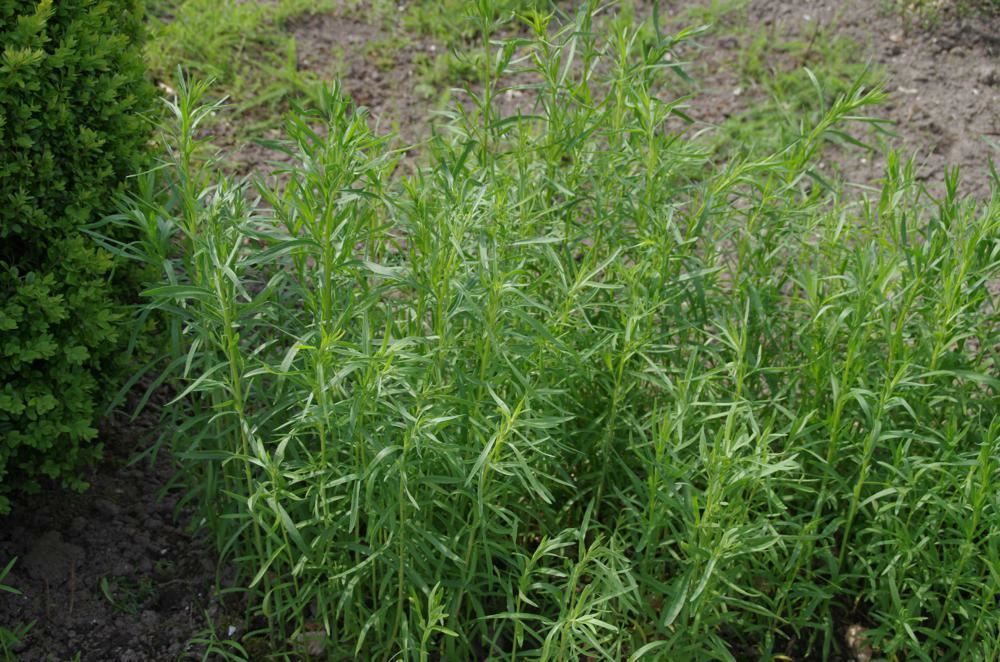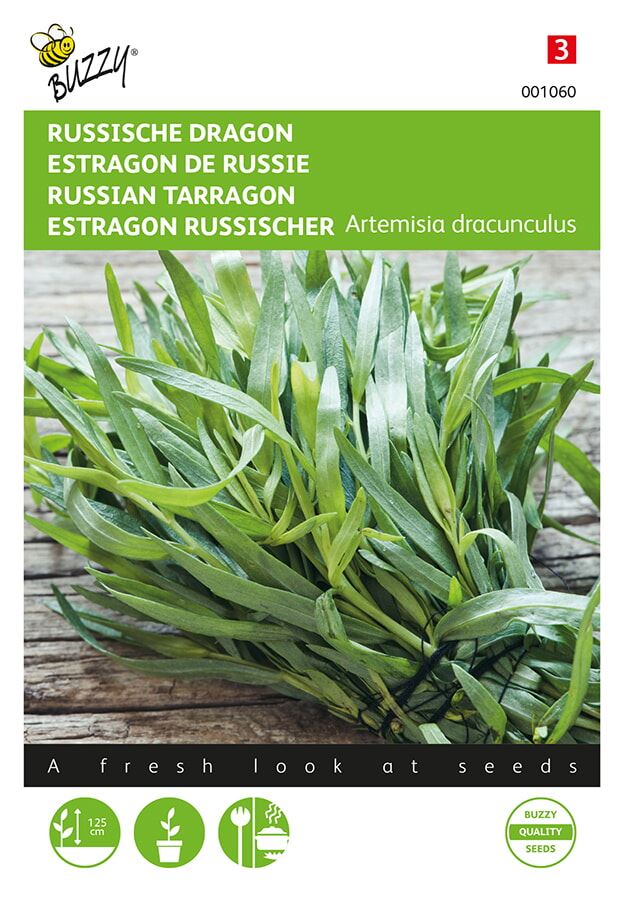Tarragon - pot 9x9 cm (Artemisia dracunculus)
Franse dragon
Product information "Tarragon - pot 9x9 cm (Artemisia dracunculus)"
There are 2 varieties the 'Russian tarragon' and the French tarragon'. The ''French tarragon'' is the most commonly used and we will describe it here.Tarragon is native to Central Asia. It is a perennial plant that requires protection in winter, however.It is a dense, bushy plant with thin stems that grows about 60 to 90 cm high and about 45 cm wide. It has narrow oblong smooth leaves that have a peppery anise flavor. Tarragon rarely blooms, it has inconspicuous small yellow-green flowers.The Russian variety is a stronger grower, grows larger, but has a less pleasant and bitter taste.The name tarragon or 'dracunculus' means dragon and refers to the jagged shape of the rhizomes.
CULTIVATION TIPS:
Tarragon likes a warm, sheltered spot, preferably in the sun, but semi-shade is also acceptable. Make sure the soil is humus-rich, nutrient-rich and well-drained.Dragon does not like to be wet for too long.Cold, damp winters therefore often cause problems.Cut the plant down to the ground before winter and make sure it is protected from frost. (Young plants have the most aromatic leaves and the best taste.The shrub will start to wood with age and is usually exhausted after 3 years. You can possibly take out the plants and select the most vigorous rhizomes to replant, better is to just plant new plants.Tarragon can also be grown well in pots or containers on the patio.
CULINARY:
Tarragon is a well-known herb in French cuisine and has a typical peppery anise flavour.It is mainly used to add flavour to sauces. Everyone knows without a doubt the bearnaise sauce or tarragon sauce, which taste delicious with various dishes.Other known applications are, tarragon vinegar and the use in mustard, dressings and vinaigrettes (great with salads).Tarragon is also perfect with chicken and egg dishes.The herb tastes best when you harvest the young plants before flowering.Always use tarragon fresh, but in moderation because the taste can quickly dominate.Optimal is when it is just before serving briefly warmed in your dishes.
MEDICINAL:
Although there are some positive properties attributed to tarragon, this herb is not really used medicinally.Tarragon is said to stimulate the appetite and stimulate digestion. Tarragon tea promotes sleep.
Product specifications
| Application / use plant: | Unknown - n/a |
|---|---|
| Application / use plant - details: | Fresh or dried in various dishes |
| Average number per m²: | 8 |
| Bloom Month: | July, August, September |
| Bloom color: | White |
| Branches / bark: | Unknown - n/a |
| Dutch plant name: | Dragon |
| English plant name: | Estragon, Tarragon |
| Flower color - details: | White |
| Frost hardiness - details: | Very excellent (-40 till -34°c), usda zone 3 |
| Frost resistance: | Extrême winter hardiness |
| Fruit: | Unknown - n/a |
| Full grown plant height: | 70 cm |
| German plant name: | Estragon, Russischer Estragon, thüring.Estragon |
| Growth habit : | Unknown - n/a |
| Growth habit - details: | Wide rising |
| Humidity/Soil: | Moist soil |
| Humidity/Soil - details: | Withstands drought well |
| Latin plant family: | Compositae |
| Leaf / Foliage: | Fine-leaved, Green |
| Leaf / foliage - details: | Deciduous, green, edible |
| Location: | Halfshadow, Full sun |
| Location - details: | Sun till half-shade |
| Minimum growing height (in cm): | 50 |
| Plant characteristic: | Aromatic, Edible (fruit, leaf, flower), Rabbit-proof |
| Plant family: | Composite family |
| Planting distance: | 7-9 pieces per m² (33-38 cm apart) |
| Pruning period: | March |
| Winter foliage: | Losing leaf |
| maximal growth height (in cm): | 75 |
| type of crop: | Perennial plant |
| type of soil: | Calcareous soil, Clay soil (calcareous), Normal soil, Peaty soil (acidic) |
| type of soil / ground - details: | Any good garden soil |
| Package dimensions: | 10L x 11W x 24.25H cm |
Pictures of this plant
Reviews
Login














